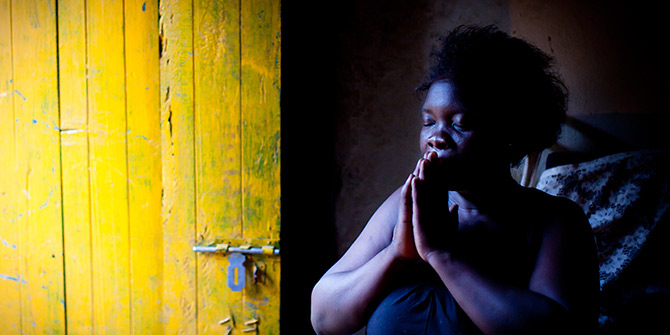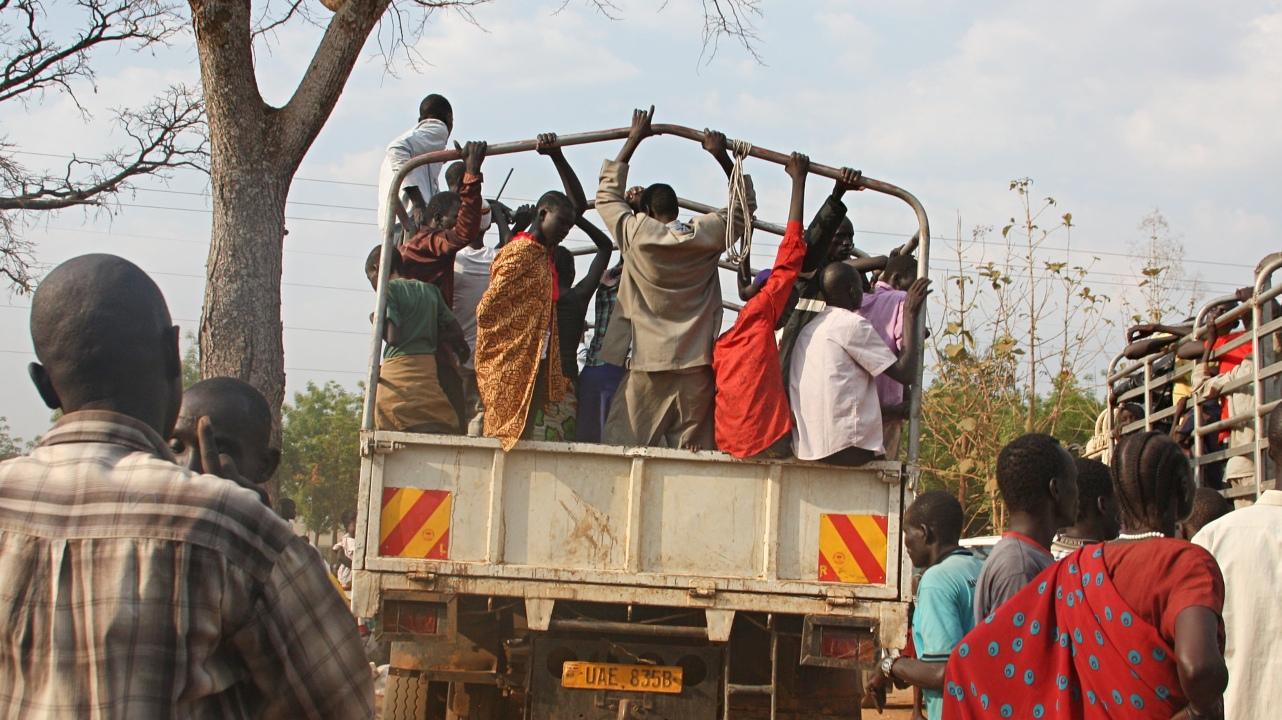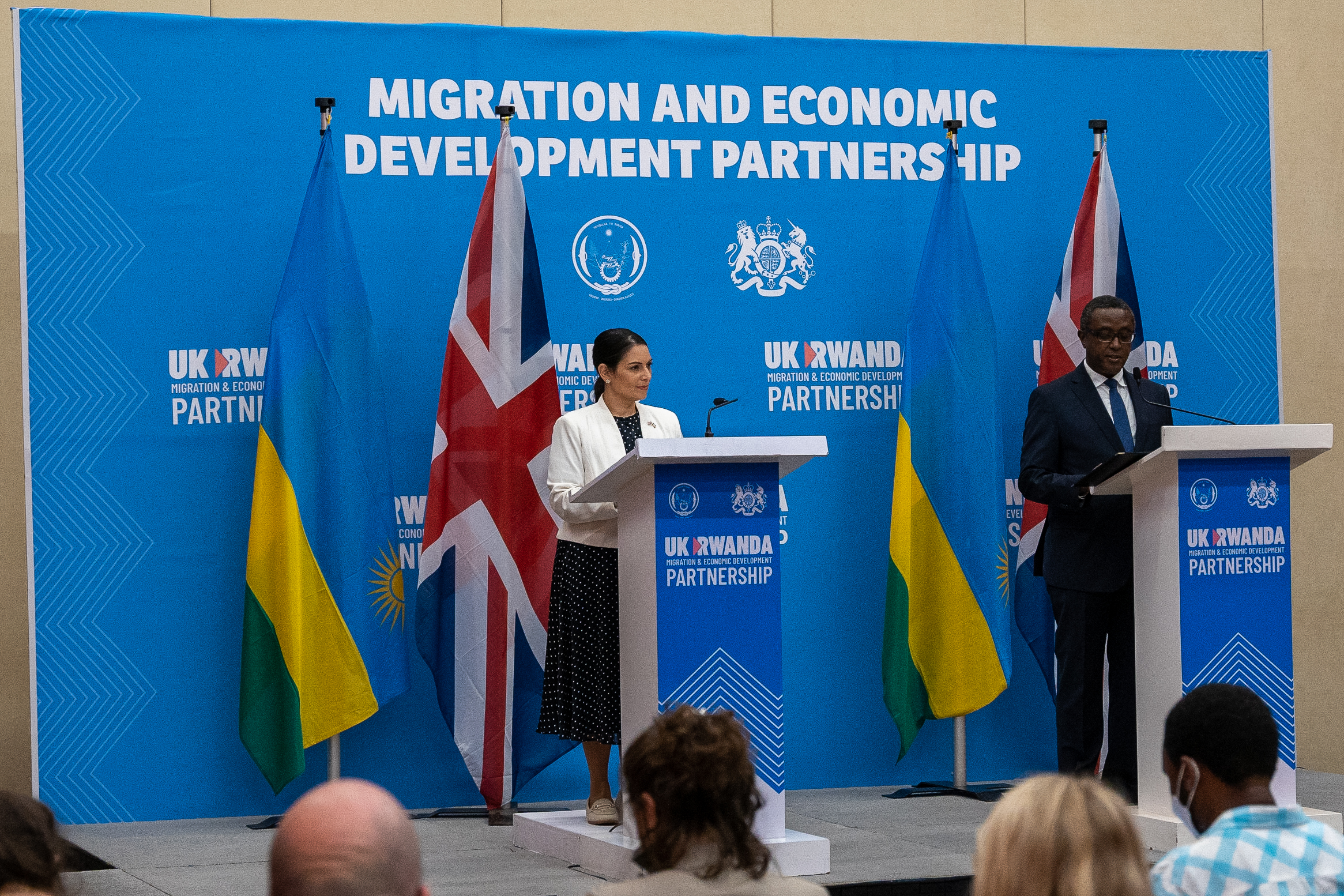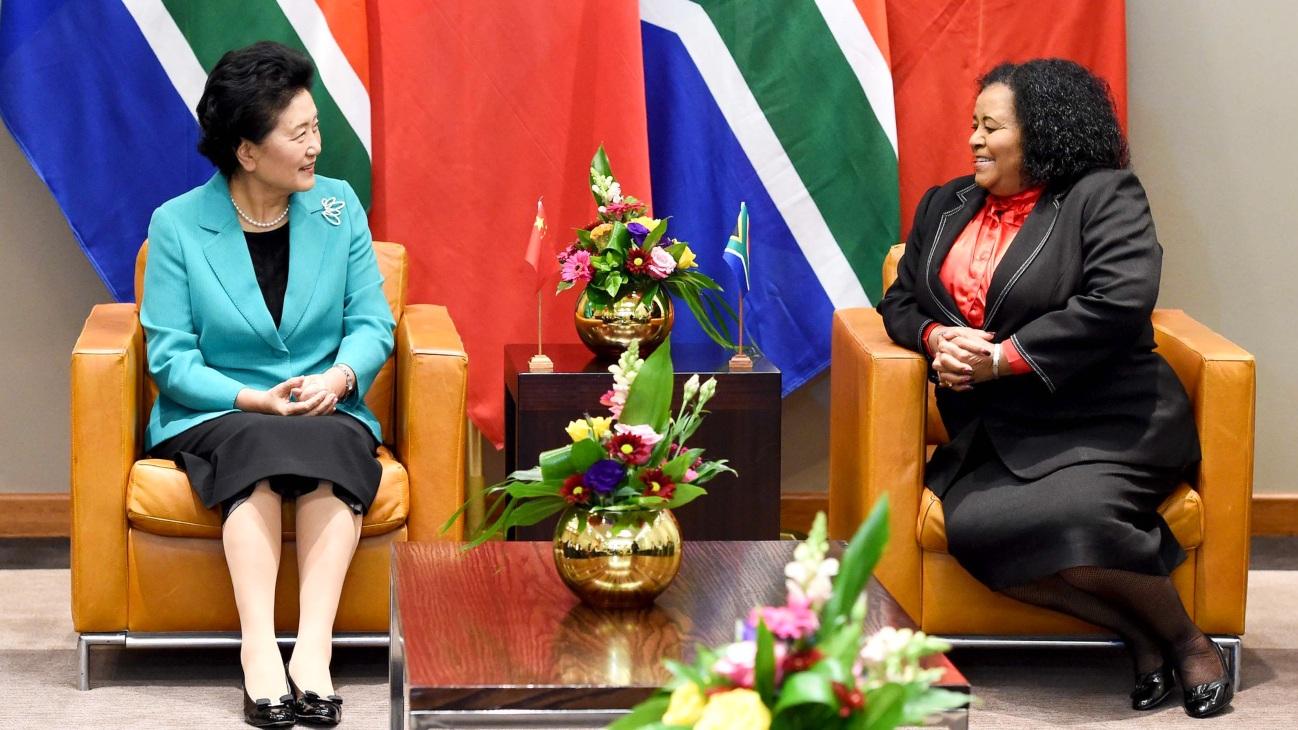As Europe seeks solutions for its so-called migration “crisis”, Matthew Wilhelm-Solomon discusses how, in both South Africa and Europe, the policing and securitising of refugee and migration policy are creating new social divides and exclusions and exacerbating insecurity.
This post is part of our series African Perspectives on Migration looking at the theme of Intra-Africa migration.
The Limpopo River snakes over the north eastern border of South Africa through Mozambique and opens out to the Indian Ocean. Its banks and the surrounding landscape are covered with bush and baobabs: through this scrubland and water many migrants and asylum seekers have charted their passage over the past decade, often aided by armed gangs, or bribing border officials.

Photo Credit: Jo Vearey
The border — with its orange farms, kilometres of fence pock-marked with holes, its truck stops flowing with the smell of rubber, and the trade of fruit, smuggled cigarettes and sex — perhaps bears only a glancing resemblance to the banks and shores of Istanbul or Benghazi, Lampedusa or Lesbos, or the Eurostar tunnel of Calais.
Yet the journeys across their waters are both treacherous in related fashions, and the promises and disappointments of their navigations connected.
The very scale of the forced migration into Europe, with apparently the largest movement of refugees and asylum seekers into Europe since the Second World War, has prompted widespread talk of “crisis.” Yet outside Europe, the scale of displacement is widely, disturbingly, commonplace.
It is worth re-iterating, that according to the UNHCR by mid-2015, no European country was even in the top ten refugee-hosting countries which are divided between Middle Eastern, Asian and African countries (Turkey hosting the most refugees globally, and Ethiopia is the largest host of refugees in Africa).
The German interior ministry claimed that there were 477,000 asylum seekers in Germany but over 1.1 million entered the country in 2015, the most in Europe, creating widespread alarm.
South Africa presently hosts 114,512 refugees compared to 798,080 asylum seekers, the majority from Zimbabwe — those still in the long and arduous evaluation system that can take several years — and certainly many more undocumented migrants.
The scale of inward migration and asylum seeking into South Africa has been met with a fraught and often contradictory social and political response. The recurrence of xenophobic violence — the latest manifestation in early 2015 — has precipitated Janus-faced positioning on behalf the state and its armed forces: sometimes playing the role of protector, others the role of persecutor.
What South Africa shows is that long periods of waiting, evaluation, battling with corruption is becoming an increasing part of the experience of seeking refuge. [2]
In 2015 the country’s president, in response to an outbreak of xenophobic violence in early 2015, set up an operation called Fiela (or ‘sweep out the dirt’ ) which invokes the exceptional right of the army with police and immigration officials to cordon off zones to be targeted.
Ostensibly for criminal policing it is hosted by the Inter-Ministerial Committee on Migration, and viewed by a parliamentary committee on Violence against Foreign Nationals as an effective preventative measure of xenophobic violence.
Yet according to many migrant organisations and legal NGOs like Lawyers for Human Rights, the operations are unlawful, and have served to alienate migrant groups and communities rather than work with them. My own ethnographic research over 2015 in inner-city Johannesburg affirms this.
The paradoxes and vacillations of rhetoric in South Africa and Europe mirror one another, albeit in distorted fashion.
We witnessed this in Italy when Prime Minister Enrico Letta macabrely pronounced in 2013 the dead of Lampedusa citizens of Italy; the subsequent establishment of the Mare Nostrum sea rescue programme, its subsequent withdrawal after lack of support by the EU abandoning thousands to death, and then partial expansion under Frontex.
We see this vacillation most notably in German Chancellor Angela Merkel’s response — the suspension and then sudden re-instatement of the Dublin treaty, requiring the return of asylum seekers to the point of first entry. We witness signs of this too in Merkel’s response to the New Year’s sexual violence in Cologne and attempts to make the deportation of criminally-prosecuted asylum seekers easier, even overriding the principle of non-refoulement – the principle in international law that individuals cannot be deported to places in which they face political persecution.
UK Prime Minister David Cameron has been less thoughtful, blunter. His comments about “smashing” the criminal gangs facilitating ocean and border crossings glosses over the key point that where the right of safe passage is denied the outcomes are familiar – the emergence of illicit economies of movement, deaths in crossing, and the impoverishment of those who make the journey. The UK, as of mid-2015, hosted only 117,234 refugees and 37,829 asylum seekers.
Where armed forces are used in urban areas, as South Africa has done over the past year (but Italy has also used its armed forces in its cities to monitor migration) this serves to alienate and stigmatise already impoverished spaces and communities.
Heavy handed policies like these increasing securitisation of anti-immigrant policies, and the enfolding of refugee and migration policy into crime and anti-terrorism measures — even while serving the present political mood — risk creating new lines of social exclusion rather than social contracts, and undermining their own aims.
Moral lines are being drawn across continents between law-abiding refugees and illicit migrants or ‘bogus’ asylum seekers; between productive workers and illicit traders; between Syrian ‘refugees’ and sans papiers; between humanitarians and traffickers.
The terrain of bush or beach-sand is a mire in which new political lines are being drawn, and categories of division and exclusion are created which have little to do with the script of international law or the Refugee Convention.
South Africa does not abandon thousands to death to drown in its sea waters each year, and those who enter its borders have access, albeit limited to employment and medical care. But the waters of the Limpopo River are not as wide as the Mediterranean Sea.
This article was first published on Migration and Health Project, Southern Africa (maHp) blog.
Matthew Wilhelm-Solomon is a writing fellow on Migration and Health Project, Southern Africa (maHp), a project of the African Centre for Migration and Society of University of the Witwatersrand and made possible through a Wellcome Trust Investigator Award, which has supported the writing of the Mahpsa blog. He has been conducting a long-term ethnographic research on migration and urban insecurity in South Africa since 2011, and has a DPhil in Development Studies from Oxford University based on a study of HIV/AIDS and Displacement in Northern Uganda.
Contact Matthew by email at matthew.wilhelm-solomon@wits.ac.za or follow him on twitter @wilhelmsolomon.
[2] Fassin, Wilhelm-Solomon and Segatti (forthcoming 2016) “Asylum as a Form of Life: The Politics and Experience of Indeterminacy in South Africa” Current Anthropology *
Read more articles from our series, African Perspectives on Migration
The views expressed in this post are those of the authors and in no way reflect those of the Africa at LSE blog or the London School of Economics and Political Science.





